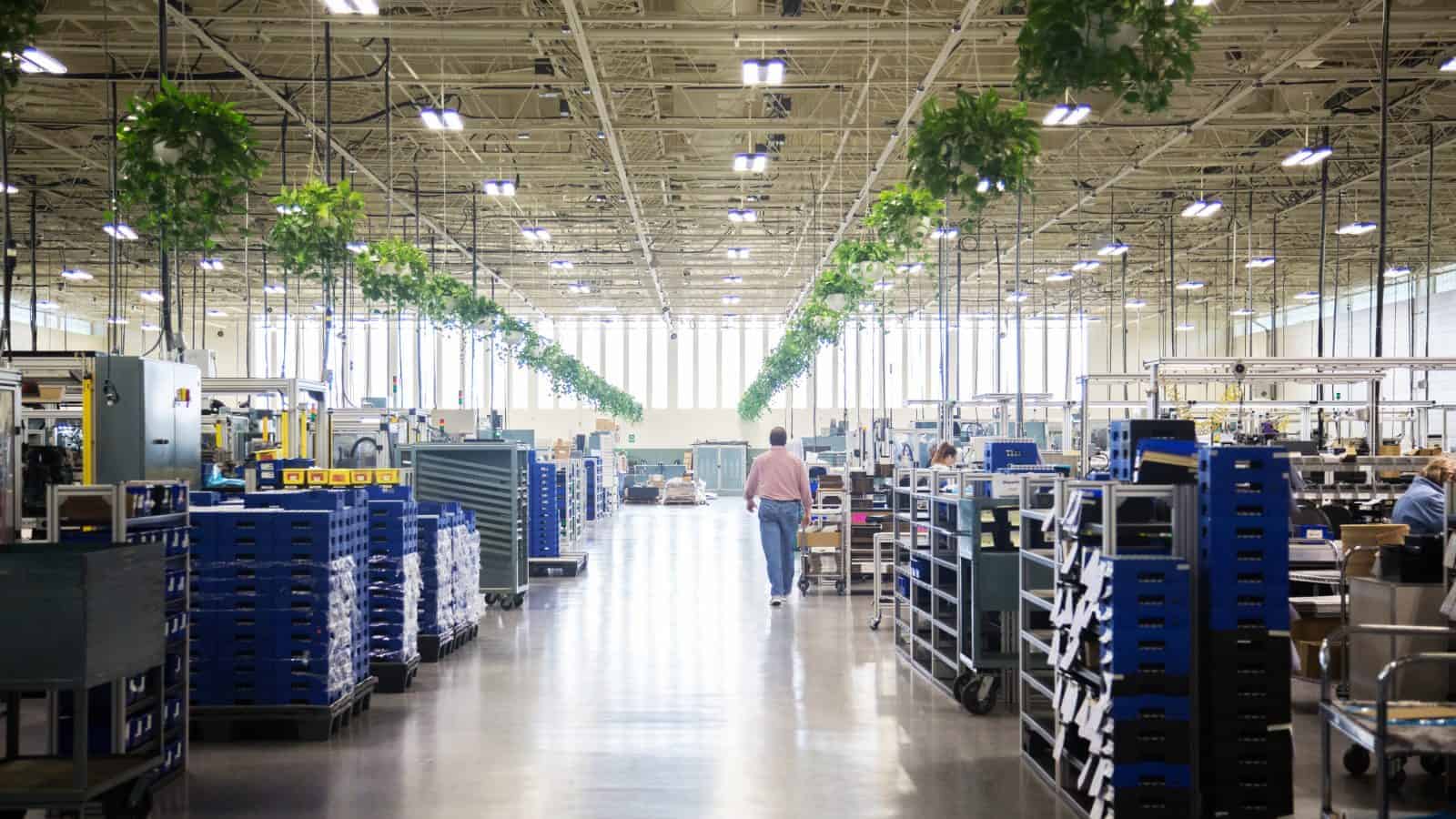Hyzon Reimagines Transportation

If you ask the leaders at Hyzon what kind of company it is, the answer might surprise you. The business, which manufactures “high-performance hydrogen fuel cell systems,” doesn’t consider itself just a manufacturer.
Making things possible: “We are a clean technology company that makes it possible to provide emissions-free power to some of the most difficult applications out there,” said Chief Operating Officer Dr. Bappaditya Banerjee. “It just so happens we are starting with Class 8 and refuse trucks.”
- In September, the Bolingbrook, Illinois–based firm announced the start of production of its single-stack, 200-kilowatt fuel cell systems to power those heavy-duty hydrogen fuel cell trucks. Hyzon is the only U.S. producer of the single-stack 200-kilowatt fuel cell.
- The new system is an upgrade from the 110-kilowatt fuel cell assemblies that Hyzon used in its first-generation vehicles.
- “If we were to put together two 110-kilowatt fuel cells to get to 200 kilowatts, the single-stack system would be 30% lighter than two110-kilowatt systems, as well as 25% cheaper to produce,” Banerjee said.
A differentiator: The company aimed to scale up the power of the engine without also significantly scaling up the size—no easy task. So Hyzon developed a proprietary solution: its hybrid bi-polar plate technology.
- “Most [fuel cell] stacks are either metal or carbon, but ours are hybrid,” Banerjee explained. “By hybrid, we mean that the cathode—where the oxygen comes into the system—is carbon, while the anode side is metal. The carbon side is more corrosion resistant while the metal side is strong, rigid and easier to manufacture, which allows a compact design.”
- “It’s the structure of the plates and the unique 200-kilowatt, single-stack design that allowed us to make it small enough to fit under the hood of a truck,” added Hyzon Vice President of Global Engineering Ravi Desai. “What does this is the design combination of our Membrane Electrode Assembly, the bi-polar plates and the compact balance of plant,” he said, referring to the network of pipes, hoses and fittings necessary for the fuel cell stack to work.
Uses and range: Hyzon offers two different emissions-free, heavy-duty vehicle types for industrial and commercial use, including a refuse collection truck. The models boast driving ranges comparable to those of diesel-powered trucks.
- The Heavy Duty Class 8 Fuel Cell trucks can typically go 350 miles from full storage tanks to empty, while the Fuel Cell garbage trucks can do a full day of work (at least 1,200 trash bin lifts and 125 miles of driving range) on a full tank.
- The trucks take about 15 to 20 minutes to refuel with a fast-fill dispenser at 350 bar, the pressure of the hydrogen gas needed to fill the trucks.
A challenge: In the U.S., the only publicly available hydrogen fuel refilling stations are in California, restricting widespread adoption for now. Meanwhile, the cost of filling up can be high.
- To support the construction of stations around the country and lower prices, the Biden administration announced $7 billion in funding last year for regional clean hydrogen “hubs.”
- In addition, the Inflation Reduction Act created the 45V hydrogen production tax credit, designed to help jumpstart scalable and sustainable domestic hydrogen fuel production.
- The credit is not yet available to companies, however, as the administration works to issue final regulatory guidance. The NAM has worked tirelessly to ensure this guidance is as broad, flexible and fair as possible.
Good for everyone: Hyzon doesn’t want to be the only player in the hydrogen ecosystem. On the contrary, it welcomes competition for the good of consumers and the industry.
- “The number of people who have been able to provide something useful [in transportation] using hydrogen is so limited that the more of us who succeed, the more it allows for hydrogen to become a normal part of our infrastructure,” said Banerjee. “A rising tide lifts all boats.”
Lucid Revs Up the Domestic Graphite Supply Chain
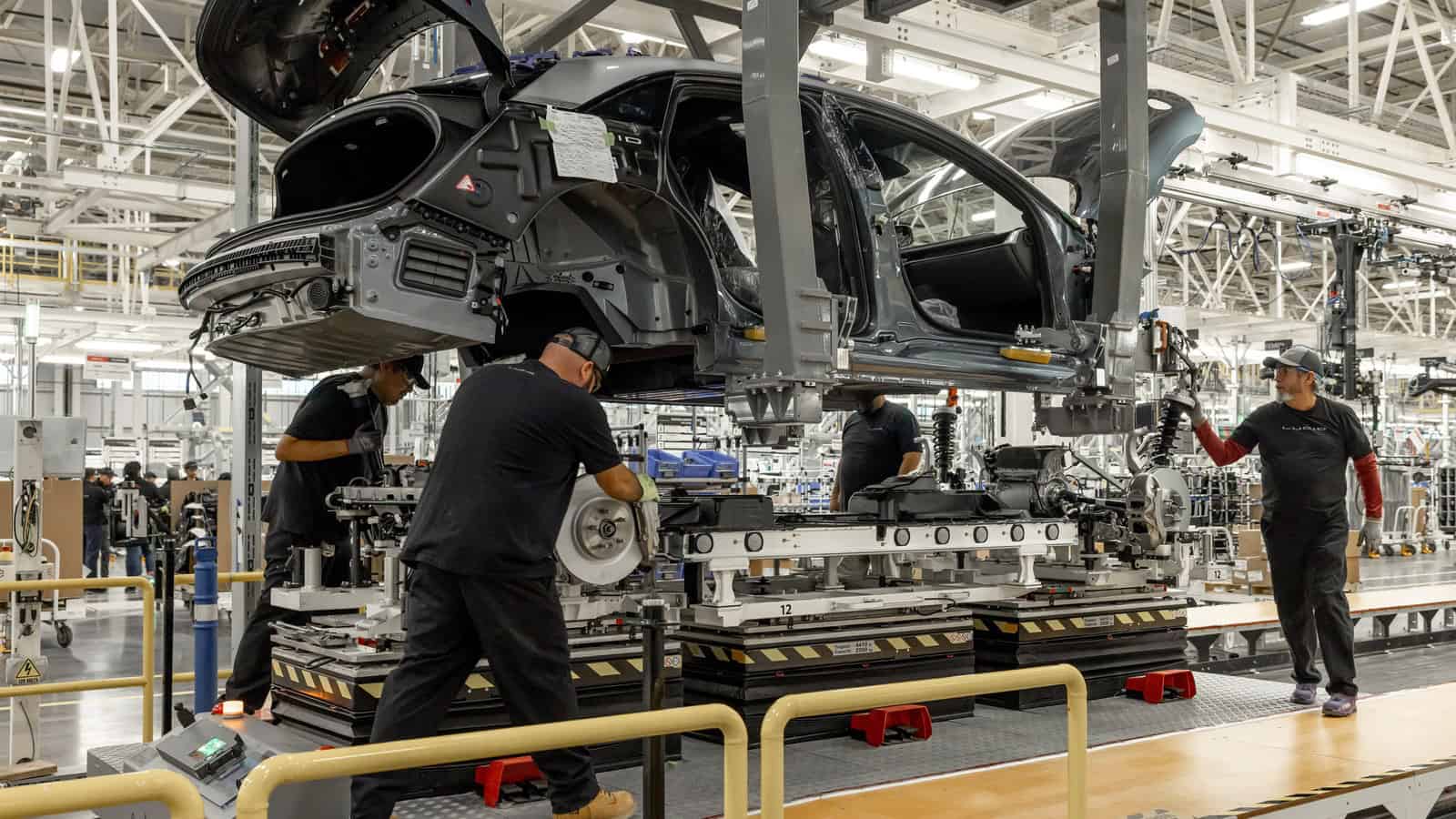
Lucid has already made one of the most energy-efficient cars on the market. Now the company is on a mission to strengthen supply chains for the critical materials powering its award-winning vehicles.
Supply chain warrior: The California-based electric vehicle manufacturer—whose 2025 Air Pure sedan is the first EV to achieve a milestone 5 miles of range per kilowatt of energy—recently reached an agreement with Alaskan mining exploration company Graphite One to purchase synthetic graphite for its vehicles’ battery packs.
- The deal, which goes into effect in 2028, is a crucial first step toward cementing a domestic supply chain of graphite, a mineral that makes up about half of every EV’s battery composition. EV batteries require both synthetic and natural graphite.
- “Today 100% of the graphite for batteries assembled in the U.S. comes from overseas,” said Lucid Motors Supply Chain Group Manager of Battery Raw Materials Michael Parton. “Building a robust domestic supply chain ensures the United States and Lucid will maintain technology leadership in this global race.”
Pandemic lesson: The global pandemic revealed the downside of depending on other nations for critical materials, and the importance of cultivating domestic sources instead.
- In 2020, “every company experienced major challenges when it came to shutdowns and global trade,” Parton said. “Having a domestic supply reduces production risk, accelerates response time and agility and lowers the need to carry higher levels of inventory.”
A midstream gap: When it comes to EV batteries and their supply chains, “much of the discussion is on localizing the bookends of the supply chain, the downstream battery production and the upstream mineral extraction,” Parton told us.
- Less discussed is the “midstream environment,” which comprises the precursor cathode active materials (P-CAM) and cathode active materials (CAM) stages. Materials used during these phases in the battery production process include critical minerals such as lithium, nickel and cobalt.
- The P-CAM market has been a difficult one to navigate, Parton added. For years, the P-CAM stage has been outsourced to countries with more cost-effective production. The problem: These countries also have less stringent environmental regulations than the U.S.
- “There’s limited investment announced [in the U.S.] in the refining and chemical conversion process at these stages, but it’s where the real need is,” Parton continued. “To promote localized sources of supply for mined and recycled minerals, there needs to be a domestic option for both P-CAM and CAM.”
A bipartisan issue: Lucid’s advocacy for a strong domestic supply chain has won bipartisan support in Congress.
- “There’s something in it for everyone when it comes to efficiency,” said Lucid Motors Senior Manager of International and Trade Policy Emily Patt, citing the environmental and self-sufficiency benefits of a resilient domestic supply chain.
What’s next: Lucid is expanding its vehicle lineup beyond the Air and the vehicle’s four trim levels.
- By the end of 2024, the company is scheduled to start production of the seven-passenger Lucid Gravity. The company has also teased an upcoming midsize platform, which is expected to start production in late 2026.
The grand vision: “The pursuit of efficiency drives Lucid as a company,” Patt said. “We’re not just making zero-emission cars; we’re committed to making the best use of the world’s resources to maximize the benefits for electrification and the planet.”
NAM Sees Strength for Manufacturing as Washington Transitions
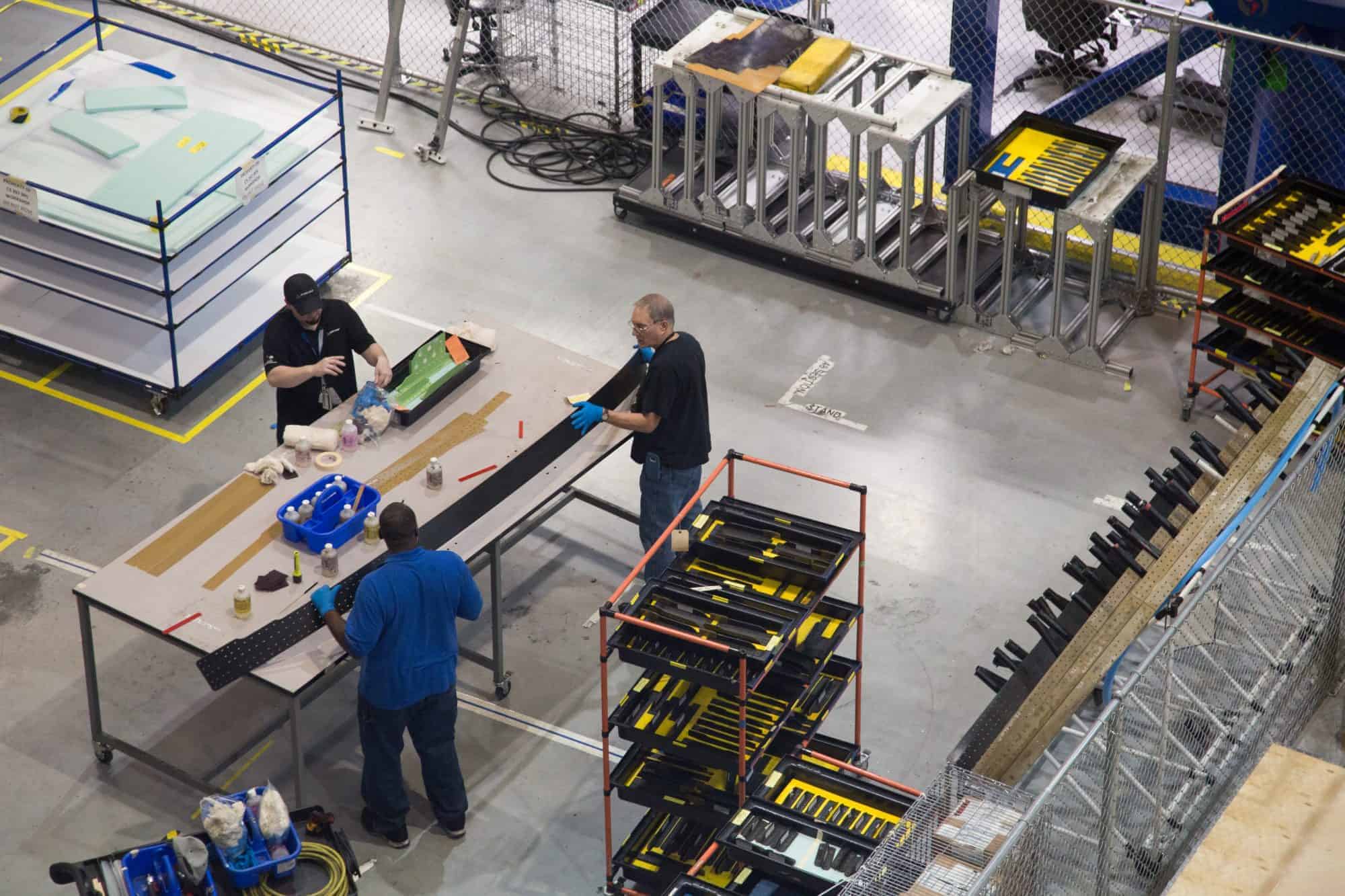
With a new administration and Congress on the horizon, the NAM is signaling confidence in its ability to secure wins for manufacturing in the United States, highlighting both recent achievements and policy priorities moving forward.
“The NAM has always focused on what’s best for manufacturing in America, and our track record speaks to that,” said NAM Executive Vice President Erin Streeter. “Our approach is consistent because we know what it takes to get results.”
What we’ve delivered: With post-partisan engagement, the NAM has achieved historic policy wins across both recent administrations, including:
- Tax reform: The NAM’s advocacy helped shape the 2017 tax cuts, driving billions in savings that manufacturers have reinvested in jobs, innovation and facility upgrades.
- Regulatory certainty: The NAM has played a pivotal role in streamlining regulations, reducing compliance costs under the Trump administration and working to slow regulatory expansion during the Biden years.
- United States-Mexico-Canada Agreement: The NAM was a key advocate for USMCA, safeguarding U.S. jobs by ensuring fairer competition and greater access to key markets.
- Energy advances: NAM-backed policies have supported growth in domestic energy production, creating a more stable energy market.
- Infrastructure and CHIPS Act: The NAM was instrumental in securing the historic Bipartisan Infrastructure Law and the CHIPS and Science Act, both critical for modernizing the economy, bolstering national security and ensuring a reliable semiconductor supply.
“These wins demonstrate what we bring to the table,” Streeter said. “By staying focused on manufacturing’s priorities, we can partner effectively with the new administration and Congress to create and protect jobs and strengthen communities.”
Looking ahead: The NAM’s focus on core issues remains critical for keeping the sector competitive and resilient, Streeter continued. These issues include:
- Securing tax reform: The NAM’s “Manufacturing Wins” campaign aims to lock in key 2017 tax provisions that manufacturers rely on for stability and growth. “Tax reform has been a game-changer,” said Streeter. “Protecting that progress means more jobs and manufacturing-led growth across the country.”
- Regulatory certainty: The NAM is advocating for balanced regulations that support competitiveness. “Manufacturers thrive with clear, fair rules,” Streeter noted. “We’re making sure Washington understands the importance of regulatory stability—and the danger of excessive regulation.”
- Energy security: The NAM is working to secure reliable, affordable energy while fostering innovation in sustainability. “Energy security and grid reliability are top of mind for every manufacturer,” Streeter added. “We’re ensuring manufacturers can continue to innovate, grow and drive America forward.”
Bottom line: The NAM remains focused on advocating for policies that strengthen U.S. manufacturing. “Our success is built on trust and influence,” Streeter said. “Our members know the NAM is a constant force, with the relationships and expertise to deliver, regardless of political changes.”
In related news, President-elect Trump has named campaign manager Susie Wiles as White House chief of staff (Reuters, subscription), a choice NAM President and CEO Jay Timmons called “a powerful move to bring bold, results-driven leadership to the White House from day one.”
AO Smith’s Water Heaters Drive Building Efficiency
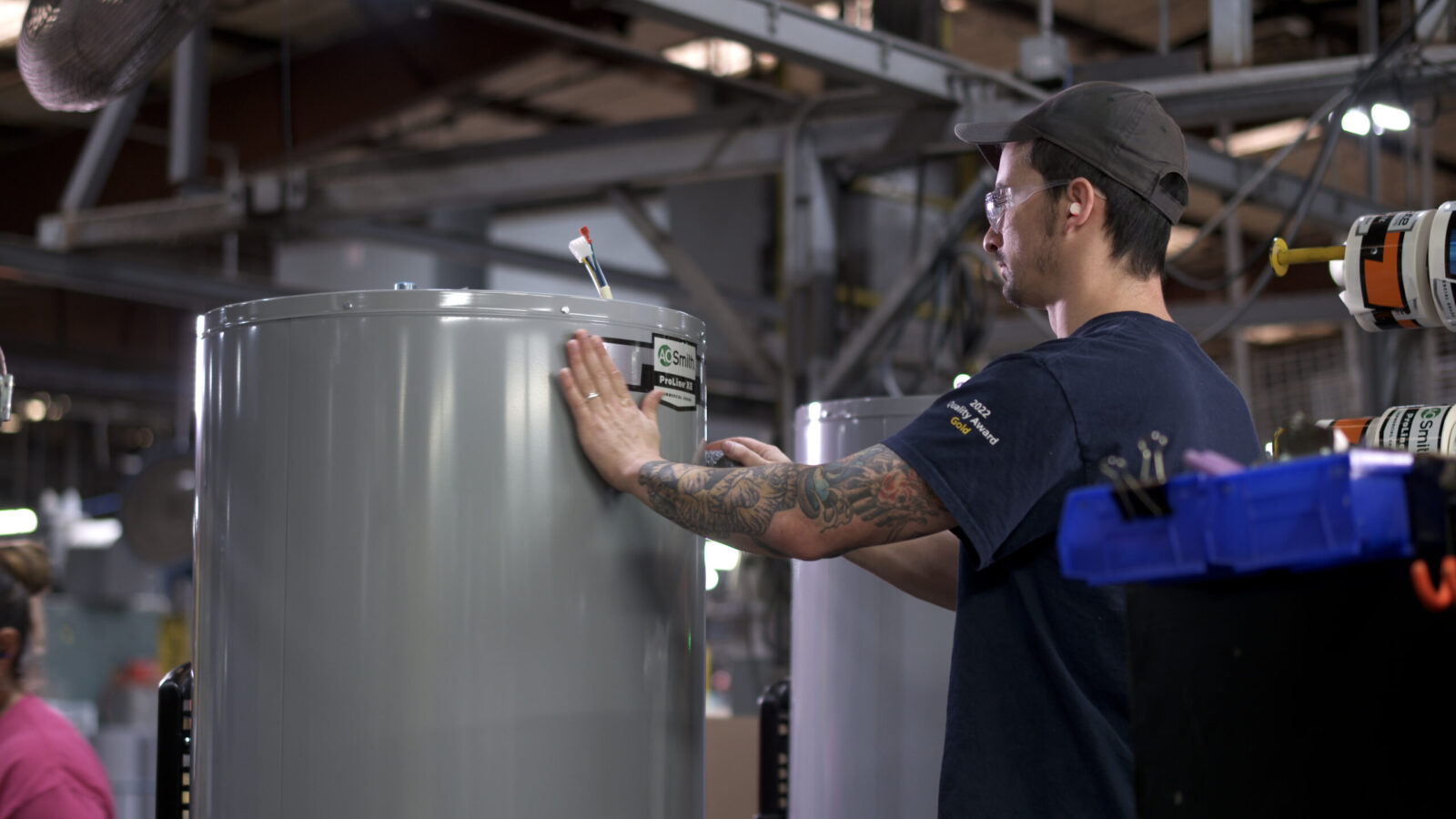
At AO Smith, the name of the game is efficiency. Though the company produces an array of water heaters, boilers, storage tanks and water treatment and filtration equipment, one goal is the same for every product: It should do more with less. This is especially true for hydronic and water heating appliances as these are energy intensive.
“On average, water heating loads are 25–30% of a home or building’s carbon profile,” said AO Smith Corporate Vice President of Government, Regulatory and Industry Affairs Joshua Greene.
- “After space heating and cooling, water heating is the next largest energy load in a home or commercial building. If you’re concerned about your energy spend, using heat pump technology is the most efficient way in which to reduce the overall spend on those heating loads.”
Efficiency in action: Recently, one of the Milwaukee, Wisconsin–based company’s water heating products—the CHP-120 fully integrated heat pump water heater—was installed in a Hilton property in New Haven, Connecticut, the all-electric Hotel Marcel, which opened in 2022 in the former headquarters of the Armstrong Rubber Company. Unlike conventional water heaters, which generate heat directly, heat pumps use electricity to move heat around.
- Hotel Marcel is the sole U.S. hotel to earn the U.S. Green Building Council’s Leadership in Energy and Environmental Design Platinum status in a decade.
The differentiator: The CHP-120 is the only unitary (one-piece) commercial heat pump water heater on the market. Comparable items use a split system in which one part, the compressor, sits outside of the building.
- The design enables Hotel Marcel and other customers to put the entire unit inside in a single room and “get the benefit of taking moisture out of the air in that room, then get to use the hot water that’s in the tank afterward, for laundry and other uses,” Greene told us.
- “So, it’s essentially free hot water—and you’re bringing down the ambient air temperature and humidity, which helps offset energy that would have been needed to cool that area.”
Gaining popularity: Current heat pump water heater customers are mostly residential homeowners, but in the commercial market, the technology has been growing at a rapid pace, Greene continued, because the energy savings “go straight to companies’ bottom line.”
- “Many states now offer rebates to help offset the higher upfront costs of the technology. As a result, we’re starting to install commercial heat pump water heaters in restaurants, schools, [more] hotels, multifamily housing” and more.
- A single CHP-120 installed in an apartment building, for example, can support several apartments depending upon on-site conditions, Greene said.
Overcoming barriers: Of the millions of water heaters (gas and electric) sold each year by manufacturers in the U.S., fewer than 3% are heat pump water heaters, Greene said. The main reason: price.
- “The average all-in project cost of a heat pump water heater is from $3,000 to $6,000” in the residential market, he went on. From a residential standpoint, “the average all-in cost of a 45-gallon gas or electric unit is about $800. It’s that cost delta that’s been the main impediment—but they’re 300 to 400 times more efficient, so one will save you 70% on your bill every month.”
- In the commercial market, heat pump water heating project costs are much higher due to size and other variables, but the energy savings can be exponentially larger, Greene added.
Regulation changes: With state and federal regulations and rebates, incentivizing high-efficiency technologies, heat pump water heater adoption—which is already on the uptick—will likely rise in many states in the coming years, according to Greene.
- “Now with robust federal tax credits and home energy rebates, coupled with utility rebates, they’re slicing that $3,000 to $6,000 [price tag] in half, and in places like California, you can get 80% or more of the cost covered.”
- AO Smith expects to stay busy, Greene said with a laugh.
Coming up: What’s next for a company that, in its 150-year history, has been at least three different businesses—having gone from automotive-frame maker to energy sector steel product manufacturer to leading global water technology company?
- “You can certainly expect to see continued innovation,” said Greene. “Our company has transformed a few times over the past century, and we will continue to evolve, with a focus on water technology, while adhering to the guiding principles and values that the Smith family established 150 years ago.”
NAM, Allies Urge Court to Vacate PFAS Rule
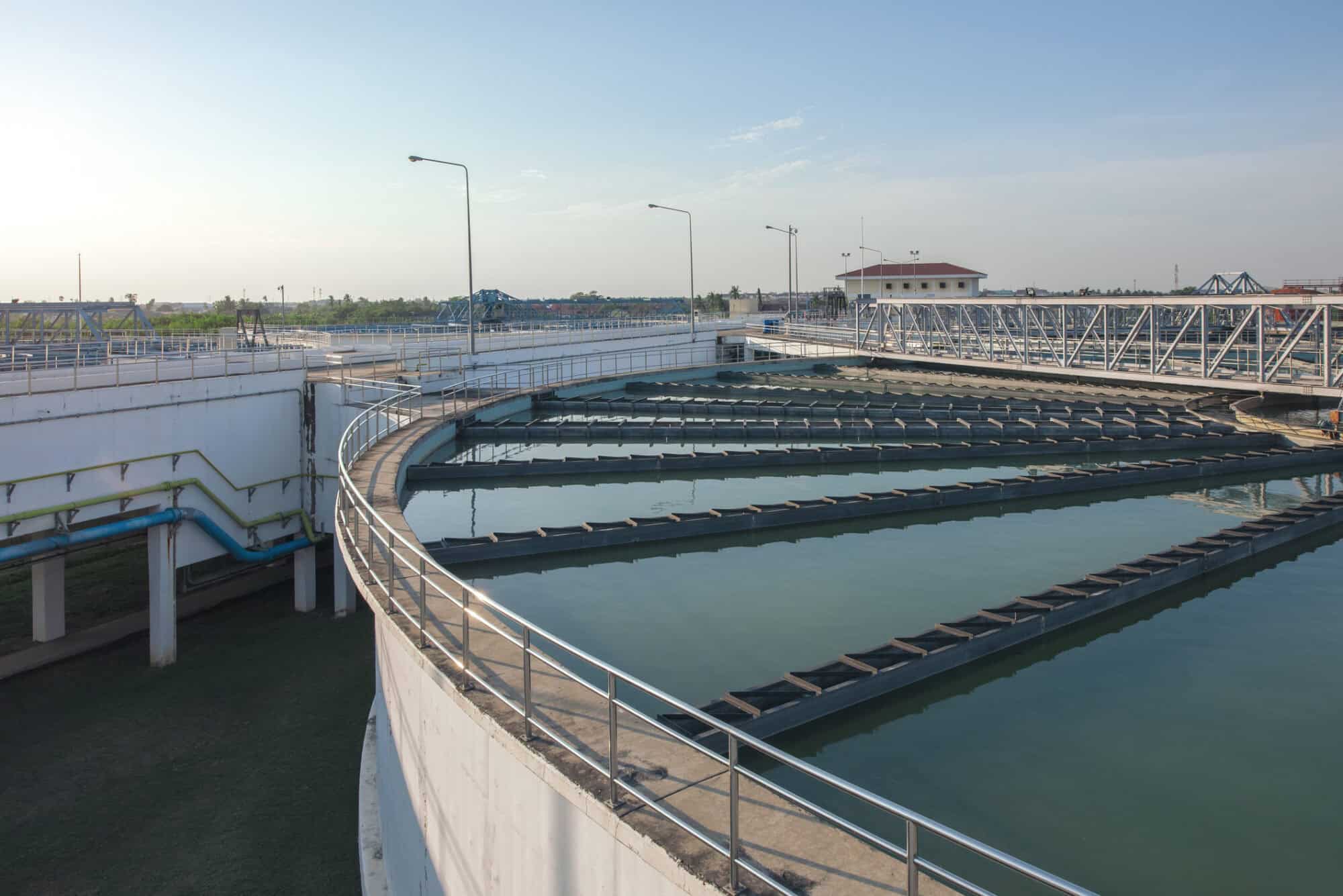
The EPA’s final rule setting national drinking water standards for PFAS should be vacated in its entirety, the NAM and two allies said in an opening brief filed in federal court Monday.
What’s going on: The NAM, the American Chemistry Council and U.S. chemical company Chemours asked the U.S. Court of Appeals for the D.C. Circuit to overturn the EPA’s rule, announced in April, which requires that municipal water systems nationwide remove six types of per- and polyfluoroalkyl substances from drinking water. Trade groups representing the water systems have also sued to overturn the rule.
The grounds: The rule is unlawful and must be set aside for the following reasons:
- The EPA used a deeply flawed cost-benefit analysis to justify the rule.
- The EPA conducted a woefully incomplete feasibility analysis that ignores whether the technology and facilities necessary for compliance actually exist.
- Critical parts of the rule exceed the agency’s statutory authority under the Safe Drinking Water Act and flout the act’s express procedural requirements.
- The EPA failed to consider reasonable alternatives or respond meaningfully to public comments that undercut its judgment.
- The agency “lacked sufficient data to regulate” HFPO-DA, one of the PFAS chemicals that falls under the rule.
Why it’s important: PFAS “are substances at the center of modern innovation and sustain many common technologies including semiconductors, telecommunications, defense systems, life-saving therapeutics and renewable energy sources,” according to the brief.
- The NAM and its co-petitioners “support rational regulation of PFAS that allows manufacturers to continue supporting critical industries, while developing new chemistries and minimizing any potential environmental impacts. But that requires a measured and evidence-based approach that the [r]ule lacks.”
What’s next: Briefing in this case will continue through the spring, with oral argument to follow and a decision from the D.C. Circuit expected in late 2025.
BLM Proposal Restricts Access to Energy Sources

The Interior Department is seeking to close hundreds of thousands of acres of land in Wyoming to traditional and renewable energy development, a plan that would cut crucial natural resource development off at the knees (POLITICO Pro, subscription).
What’s going on: Though the Bureau of Land Management’s plan, released Thursday, scales back from previous iterations the acreage recommended for conservation, it still considerably “throttles back how much of the federally administered area’s 3.6 million acres is in play for different forms of energy development.”
- The final announcement, part of the BLM’s proposed Resource Management Plan for the Rock Springs Field Office, is tantamount to “pushing Wyoming off an economic cliff with nothing more than a tattered parachute,” said John Barrasso (R-WY), ranking member of the Senate Committee on Energy and Natural Resources. “This plan isn’t designed to manage Wyoming’s natural resources. It is designed to suffocate them. … [It] directly jeopardizes Wyoming’s economy and our way of life.”
What it would do: If approved, the blueprint would replace its 27-year-old predecessor document and prohibit drilling on nearly 1.08 million acres—almost twice the number currently off-limits to new oil leases.
- It would “also [exclude] 494,350 acres from wind and solar power development and [close] 536,018 acres for geothermal power projects.”
Why it’s important: The plan could reduce economic activity in Wyoming’s oil and gas sector by some $907 million each year and cost the state nearly 3,000 jobs, according to estimates by several energy groups (Cowboy State Daily).
The NAM says: “This latest move by the Interior Department undermines U.S. energy security by needlessly restricting access to available domestic sources of critical natural resources as part of an all-of-the-above energy future,” said NAM Director of Energy and Resources Policy Michael Davin. “We urge the agency to reexamine and revise its plan.”
Sylvamo Supports Healthy Forest Ecosystems
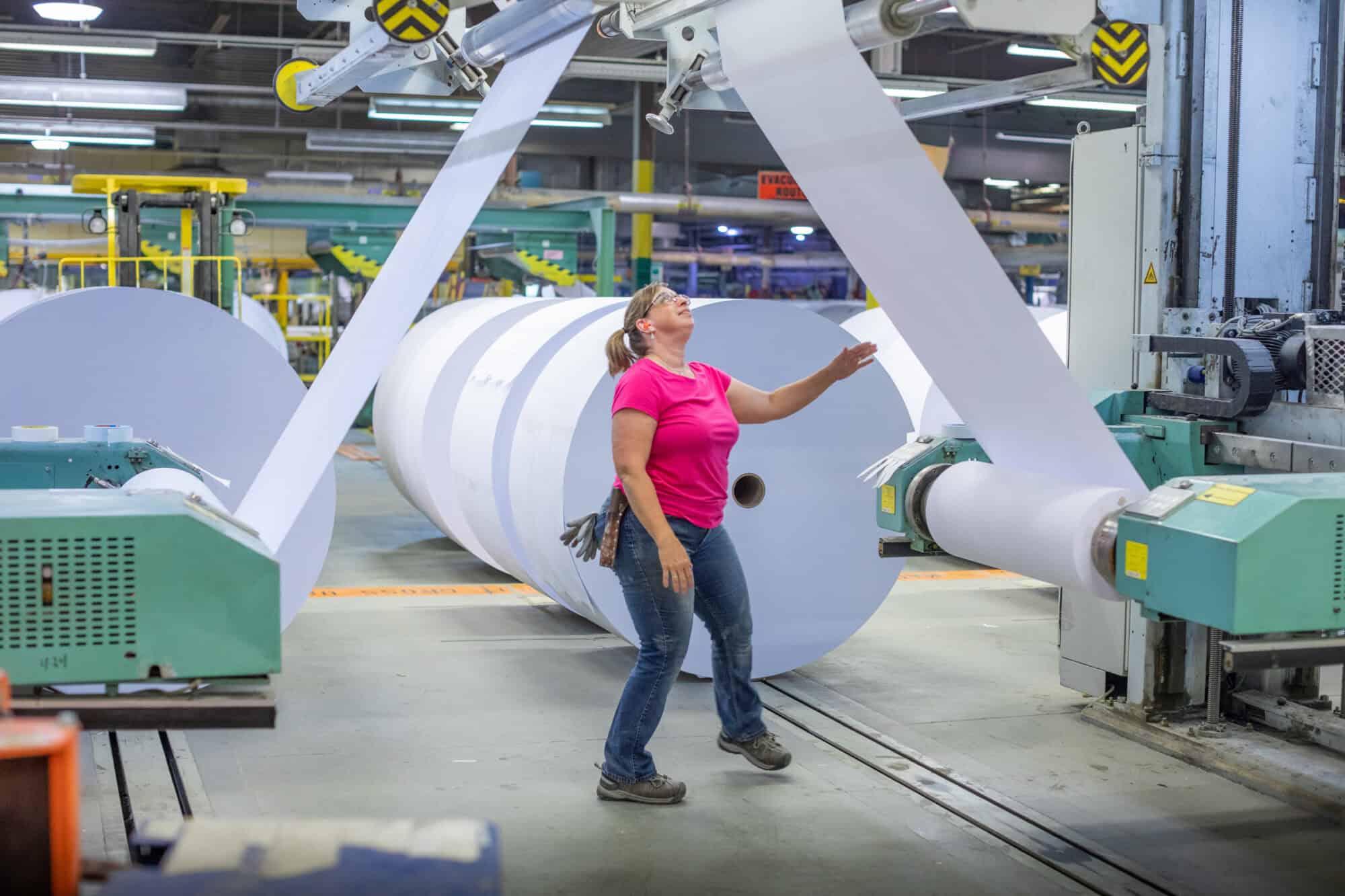
With a name that means “love of forests,” Sylvamo has a built-in dedication to sustainability. And the Memphis, Tennessee–based paper company, which spun off from International Paper in 2021, lives up to its moniker.
A holistic approach: “We use the whole tree in the manufacturing of our products,” Sylvamo Chief Sustainability Officer James McDonald told the NAM. “We use the fiber from the wood to make our paper, and all the residuals—think of the sticky stuff in trees—we capture and use to generate energy.”
- This process supplies the company with approximately 85% of its global energy needs, according to McDonald.
Planting the world: Sylvamo, which produces well-known brands like Hammermill, Accent Opaque, Springhill and HP Papers, is committed to restoring and protecting forests worldwide.
- “Our entire business depends on the sustainability of forests,” McDonald said. “It turns out your third-grade science teacher was right—photosynthesis does work. The more trees we grow, the more we can clean the air and protect the environment.”
Big ambitions: Sylvamo has conserved, enhanced or restored more than 37,000 acres of forestland to date. It has set the lofty goal of reaching 250,000 acres of forestland by 2030.
- To that end, the company is supporting the Nature Conservancy’s work to create a healthy, resilient and connected Appalachian landscape in the U.S. and the World Wildlife Fund’s work to restore Brazil’s Atlantic Forest, while also working with individual landowners to enhance forest management practices in France.
Diverse sources: Sylvamo primarily sources local fiber to manufacture its products in Europe, Latin America and North America, a strategy that enables a smaller environmental footprint, McDonald said.
- “Most of the fiber is sourced very close to [each] mill, which supports our low-cost assets in each region and this global footprint advantage in those markets,” he added.
GHG goal: The company is committed to a greenhouse gas reduction goal of 35% from a 2019 baseline across all three emissions scopes, an ambitious goal that demonstrates a commitment to improve Sylvamo’s climate impact continuously, according to McDonald.
- A quick refresher: Scope 1 refers to direct emissions, Scope 2 to indirect emissions associated with the purchase of power and Scope 3 to indirect emissions produced by a company’s value chain.
- Above all, “we try to be efficient with the energy we do use so that we can use less to produce our products,” McDonald told us.
A vital commodity: Paper and paper products continue to “play a crucial role every day in people’s lives,” said McDonald—and they are some of the world’s most recyclable materials.
- Some 68% of paper in the U.S. was recovered in 2022. In some parts of Brazil, the percentage is about 60%, and in Europe, it’s near 80%, he added.
The last word: “Just think about it: We use paper for education, communication, entertainment and more,” McDonald pointed out. “Our product plays a huge role in society and has a good lifecycle story.”
How Henkel Is Exceeding Sustainability Goals
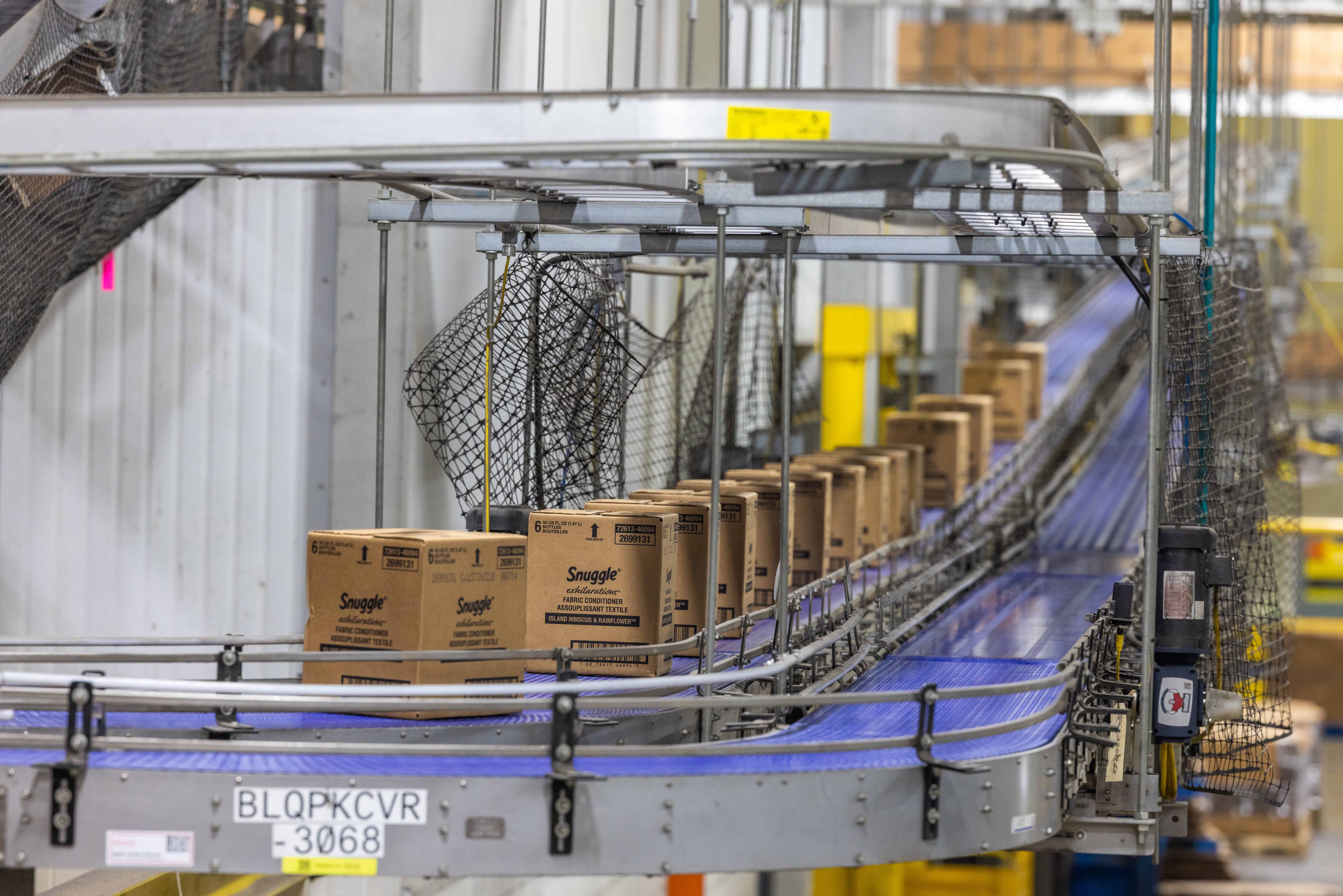
If you ask Henkel how it managed to cut its worldwide carbon footprint in half a few years ago, its leaders will gladly let you in on the secret: there isn’t one.
The impressive reduction is down to common sense and good old-fashioned effort.
Putting in the work: “One focus is on our own sites and production, and we’re continuously working on this,” said Henkel North America President Pernille Lind Olsen.
- By the end of 2023, the global adhesives and consumer brands manufacturer had fully converted 19 of its worldwide facilities to run on renewable electricity sources, a feat it achieved through on-site energy production including wind and solar, as well as direct purchase of green power from local utility companies.
- Henkel also entered into virtual power purchase agreements, financial transactions through which it buys renewable energy credits that serve to decarbonize geographically diffuse operations.
- In addition, the company hired energy-efficiency consultants to come into its most energy-intensive plants and tell it where and how to cut down on resource use and waste.
Exceeding goals: Thanks to these efforts, Henkel has reduced its carbon footprint by 61%, heading toward its 2025 goal to slash its carbon footprint (from a 2010 baseline) by 65%.
Sustainable personal care: Henkel is always on the lookout for ways to increase the sustainability of its 30-plus beauty and personal care brands, which include Purex and All laundry detergents and Schwarzkopf hair cosmetics.
- For example, the company keeps a formulation database of its more than 200,000 products. In the database, each formula is assigned a compact sustainability report, making it possible for the company to compare profiles “to optimize the impact of our footprint,” Olsen told us.
- Last March, Henkel reformulated and repackaged its Dial body washes in order to use bottles made from 100% recycled plastic.
- Henkel has also reduced the amount of virgin plastic in the bottles of Persil laundry detergent, replacing it with recycled content.
Less to landfills: Henkel isn’t done setting goals. It’s now aiming to send exactly zero waste to landfills by 2030.
- And it’s making progress: through partnerships with local waste management companies, in 2023 Henkel converted three of its U.S. sites to redirection rather than disposal of production waste from their operations—that is, they have established processes to keep materials out of landfills. Some of the ways they do this are to recycle or reuse items rather than throw them away.
- Meanwhile, some 82% of Henkel’s global facilities had already been doing the same.
A symbiotic relationship: Pursuing sustainable methods is both a business and moral imperative for the company, which will celebrate 148 years of business in September.
- “As climate change becomes a bigger challenge for everyone to tackle, it becomes increasingly necessary to prioritize sustainability as part of your business,” Olsen said.
- “And sustainability is good business for us and our customers. There’s a price benefit there. For example, when you lower the temperatures or reduce process steps at our industrial process customers, energy and material usage will be lower, maintenance of the equipment becomes less frequent and you can run longer without stopping, which saves money.”
Stronger together: “To make sure the planet’s resources can sustain us and our kids for generations, we will need to tackle the sustainability challenge of how to use less energy, fewer materials, less water,” Olsen concluded.
- “That’s a big challenge, and I’m a firm believer that it needs to be tackled collaboratively. I believe the business leaders of today play a decisive role in how we will do that.”
This story has been edited.
Emerson Finds Energy in Sustainability

When Emerson’s first-ever Chief Sustainability Officer Mike Train talks about his company, his enthusiasm shines through.
- “What we do to enable our customers is huge,” said Train. “We have an important role to play—and I get a lot of energy out of that.”
An aggressive push: The technology and engineering company, headquartered in St. Louis, Missouri, has been making big moves in sustainability over the past few years—beginning with a goal in 2018 to reduce some of its greenhouse gas intensity by 20% over 10 years.
- At the time, the goal was ambitious, and the company wasn’t quite sure how it would achieve it. But employees banded together and pulled it off.
- “We actually achieved the goal in 2022—six years early,” said Train. “But the act of putting out a goal and not knowing exactly how we’d solve for it … has been driving the culture of our company. Our employees are proud we put it out there, proud to have participated, and it’s activated thousands of people to get excited about what we’re doing.”
An inclusive approach: Since then, the company has applied a range of tactics. From “energy treasure hunts,” in which teams search for energy waste in facilities, to renewable energy procurement and collaborations with supply chain partners, Emerson is finding interesting and inclusive ways to make an impact.
- The company has gone from getting 3% of its power from renewables to getting to 49% from those sources. And it now has a commitment to use 100% renewable energy by 2030.
- Emerson is setting other big goals, too, from net-zero operations by 2030 to a zero-waste-to-landfill pledge, along with other water and biodiversity actions.
An effective framework: The company has a three-part approach to its sustainability practices.
- Greening Of Emerson involves the actions Emerson is taking to reduce its own footprint by minimizing waste and engaging its supply chain.
- Greening By Emerson involves the company’s activities to help a wide range of manufacturing customers improve their own sustainability, often through Emerson’s automation portfolio and expertise. This, according to Train, is where Emerson has its biggest opportunity for impact.
- Greening With Emerson refers to the company’s work with government and research organizations on policy and innovation, offering technical expertise and manufacturing perspective to help drive action.
A group effort: Train has seen the company coalesce around these goals—from the sustainability team he works with every day (“they bring a lot of energy and passion to what we’re doing”) to the rest of the company’s 74,000-person workforce.
- “The fun part of sustainability is everyone is learning it together,” Train continued. “You’re allowed and encouraged to borrow ideas from each other, so the collaborative part of sustainability is an awful lot of fun.”
Senior Sinema Advisor Chris Phalen to Lead NAM’s Energy and Environment Policy Team
Washington, D.C. – The National Association of Manufacturers announced that Chris Phalen, most recently a senior policy advisor to Sen. Kyrsten Sinema (I-AZ), is joining the NAM as vice president of domestic policy:
“As the NAM continues to be at the forefront of energy policy debates before Congress and federal agencies, Chris’ depth of experience and record of accomplishments will help us further stand out and influence outcomes in support of an all-of-the-above energy policy,” said NAM President and CEO Jay Timmons. “Manufacturers are facing a political war on energy. Permitting reform, securing critical mineral supply chains and regulatory barriers slowing the clean energy transition are just some of the defining issues impacting our industry’s ability to create well-paying jobs, as well as our nation’s energy security. Chris will help us steer policymakers in the right direction.”
Sen. Sinema has been a key figure in negotiating solutions to manufacturing priorities, and as her advisor, Phalen was a leader in negotiating and implementing critical energy policies and in writing the permitting reform provisions in the Fiscal Responsibility Act and key sections of the Infrastructure Investment and Jobs Act, including all provisions on energy and mining. Phalen brings a record of active engagement with key agencies, including the Environmental Protection Agency, the Department of Energy, the Department of the Interior, the Department of Agriculture, the White House Council on Environmental Quality, the Federal Energy Regulatory Commission and the Federal Permitting Improvement Steering Council. Phalen previously worked for leading energy companies, including Chevron and the Rio Tinto Group.
Timmons added, “Manufacturers are leading the global effort to fight climate change and develop the technologies needed to achieve climate goals. With Chris’ keen insight into these important policy discussions, the NAM will become an even more effective voice for the 13 million people who make things in America.”
Phalen will report to NAM Managing Vice President of Policy Chris Netram and work closely with NAM Executive Vice President Erin Streeter. His policy portfolio will include sustainability, climate, permitting reform, labor, transportation and infrastructure, and he will work alongside NAM Vice President of Domestic Policy Charles Crain and NAM Vice President of International Policy Andrea Durkin.
-NAM-
The National Association of Manufacturers is the largest manufacturing association in the United States, representing small and large manufacturers in every industrial sector and in all 50 states. Manufacturing employs nearly 13 million men and women, contributes $2.89 trillion to the U.S. economy annually and accounts for 53% of private-sector research and development. The NAM is the powerful voice of the manufacturing community and the leading advocate for a policy agenda that helps manufacturers compete in the global economy and create jobs across the United States. For more information about the NAM or to follow us on Twitter and Facebook, please visit www.nam.org.
